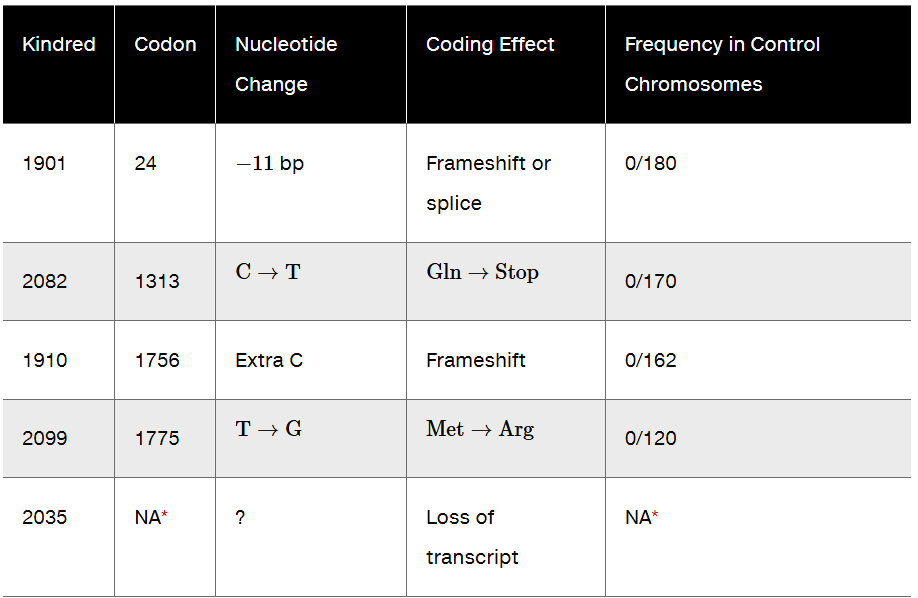A study by Bose and colleagues (1998). Blood 92:3362-3367] and a previous study by Biernaux and others (1996). Bone Marrow Transplant 17:(Suppl. 3) S45–S47] showed that BCR-ABL fusion gene transcripts can be detected in 25 to 30 percent of healthy adults who do not develop chronic myelogenous leukemia (CML). Explain how these individuals can carry a fusion gene that is transcriptionally active and yet does not develop CML.
Table of contents
- 1. Introduction to Genetics51m
- 2. Mendel's Laws of Inheritance3h 37m
- 3. Extensions to Mendelian Inheritance2h 41m
- 4. Genetic Mapping and Linkage2h 28m
- 5. Genetics of Bacteria and Viruses1h 21m
- 6. Chromosomal Variation1h 48m
- 7. DNA and Chromosome Structure56m
- 8. DNA Replication1h 10m
- 9. Mitosis and Meiosis1h 34m
- 10. Transcription1h 0m
- 11. Translation58m
- 12. Gene Regulation in Prokaryotes1h 19m
- 13. Gene Regulation in Eukaryotes44m
- 14. Genetic Control of Development44m
- 15. Genomes and Genomics1h 50m
- 16. Transposable Elements47m
- 17. Mutation, Repair, and Recombination1h 6m
- 18. Molecular Genetic Tools19m
- 19. Cancer Genetics29m
- 20. Quantitative Genetics1h 26m
- 21. Population Genetics50m
- 22. Evolutionary Genetics29m
19. Cancer Genetics
Cancer Mutations
Problem 28b
Textbook Question
The table in this problem summarizes some of the data that have been collected on mutations in the BRCA1 tumor-suppressor gene in families with a high incidence of both early-onset breast cancer and ovarian cancer.

Examine the types of mutations that are listed in the table, and determine if the BRCA1 gene is likely to be a tumor-suppressor gene or an oncogene.
 Verified step by step guidance
Verified step by step guidance1
Step 1: Understand the role of tumor-suppressor genes and oncogenes. Tumor-suppressor genes typically prevent uncontrolled cell growth and mutations in these genes often result in loss of function, leading to cancer. Oncogenes, on the other hand, promote cell growth and mutations in these genes often result in gain of function, leading to cancer.
Step 2: Analyze the types of mutations listed in the table. The mutations include frameshift mutations, nonsense mutations (e.g., Gln→Stop), and missense mutations (e.g., Met→Arg). Frameshift and nonsense mutations often lead to loss of function, while missense mutations can alter protein function.
Step 3: Examine the coding effects of the mutations. Frameshift mutations and nonsense mutations typically result in truncated or nonfunctional proteins, which is consistent with the loss of function seen in tumor-suppressor genes. Missense mutations may also impair protein function depending on the specific amino acid change.
Step 4: Consider the frequency of these mutations in control chromosomes. The table shows that these mutations are not found in control chromosomes, suggesting that they are specific to individuals with a high incidence of early-onset breast and ovarian cancer. This supports the idea that these mutations are pathogenic.
Step 5: Conclude based on the evidence. Since the mutations in BRCA1 lead to loss of function and are associated with cancer, this strongly suggests that BRCA1 is a tumor-suppressor gene rather than an oncogene.
 Verified video answer for a similar problem:
Verified video answer for a similar problem:This video solution was recommended by our tutors as helpful for the problem above
Video duration:
1mPlay a video:
Was this helpful?
Key Concepts
Here are the essential concepts you must grasp in order to answer the question correctly.
Tumor-Suppressor Genes
Tumor-suppressor genes are crucial for regulating cell growth and preventing uncontrolled cell division. When these genes are mutated, their ability to control cell proliferation is compromised, leading to an increased risk of cancer. The BRCA1 gene is a well-known tumor-suppressor gene, and mutations in this gene are associated with a higher incidence of breast and ovarian cancers.
Recommended video:
Guided course

Mapping Genes
Types of Mutations
Mutations can be classified into several types, including point mutations, insertions, deletions, and frameshifts. Point mutations involve a change in a single nucleotide, while insertions and deletions can alter the reading frame of the gene, potentially leading to a nonfunctional protein. Understanding the specific types of mutations in the BRCA1 gene is essential for assessing its role in cancer predisposition.
Recommended video:
Guided course

Mutations and Phenotypes
Oncogenes vs. Tumor-Suppressor Genes
Oncogenes and tumor-suppressor genes play opposing roles in cell regulation. Oncogenes promote cell division and survival, often leading to cancer when activated. In contrast, tumor-suppressor genes inhibit cell growth and repair DNA damage. Determining whether BRCA1 functions as a tumor-suppressor gene or an oncogene is critical for understanding its role in cancer development.
Recommended video:
Guided course

Cancer Mutations
Related Videos
Related Practice
Textbook Question
484
views


